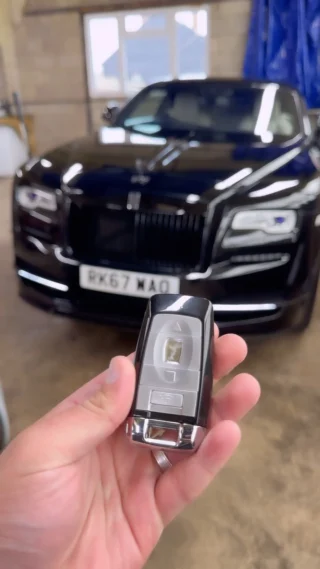Car Key Jammed: Causes, Solutions, and Preventive Measures
A car key jammed in the ignition is a common problem faced by vehicle owners. The disappointment frequently intensifies when people are pushed for time or require immediate access to their vehicle. This post intends to provide detailed guidance on understanding the causes behind a jammed key, possible solutions to solve the concern, and preventive measures to prevent recurrence in the future.
Understanding the Causes of a Jammed Car Key
A car key may end up being jammed in the ignition for numerous factors. Some of these causes consist of:
| Cause | Description |
|---|---|
| Worn-out Key | A key that has actually become used might struggle to fit effectively within the ignition. |
| Ignition Cylinder Issues | Dirt, debris, or damage within the ignition cylinder can obstruct the key. |
| Guiding Wheel Lock | If the steering wheel is locked, it can avoid the key from turning or being gotten rid of. |
| Electrical System Malfunction | Defective electrical connections or problems with the ignition switch can trigger issues. |
| Cold Weather | Exceptionally low temperatures can cause condensation to freeze within the ignition system. |
Identifying the Problem
Before using any solutions, it is vital to identify the issue plainly. The following list can assist in determining the underlying problem:
- Check the Steering Wheel: If the steering wheel is locked, gently turn it while attempting to get rid of the key.
- Inspect the Key: Examine the key for signs of wear and tear, or flexing which may prevent proper performance.
- Examine the Ignition Cylinder: Look for noticeable particles or internal malfunctions that could be triggering the jam.
- Temperature level Check: Consider the climate conditions. Is it abnormally cold, which could impact ignition performance?
Solutions for a Jammed Car Key
As soon as the source has actually been developed, a number of solutions can be applied to deal with the jammed key concern.
Immediate Solutions
- Gentle Wiggling: Attempt to gently wiggle the key while attempting to turn or pull it out. Prevent utilizing excessive force to prevent damage.
- Lubrication: Applying a little quantity of graphite or silicone lube can assist loosen a stuck key. Spray or insert it into the ignition cylinder carefully.
- Use Pliers: If the key's head is available, utilizing pliers might provide the essential grip to pull the key out without much force.
- Battery Disconnect: If the key is stubbornly stuck, disconnecting the vehicle battery for a few minutes may reset the electrical elements.
Long-lasting Solutions
If the problem persists or returns frequently, consider the following actions:
- Key Replacement: If the key is worn out, it may be required to change it. Check out a locksmith or your car dealership for a brand-new key.
- Ignition Cylinder Replacement: In cases of extreme damage or regular jams, changing the ignition cylinder itself may be needed.
- Expert Assessment: When DIY attempts fail, seeking support from an expert mechanic is a good idea. They can detect and repair much deeper issues within the car's ignition or electrical system.
| Option | When to Use |
|---|---|
| Mild Wiggling | When the key is slightly stuck however appears functional. |
| Lubrication | If the ignition appears filthy or the key is tough to turn. |
| Usage Pliers | When the key head is accessible and there's a noticeable grip. |
| Expert Assessment | When all DIY indicates stop working or when deeper mechanical/electrical problems are presumed. |
Preventive Measures
To avoid prospective issues in the future, vehicle owners can use a number of preventative strategies:
- Regular Maintenance: Schedule routine evaluations of your vehicle's ignition system to make sure everything is working efficiently.
- Key Care: Handle car keys with care, avoiding dropping them or exposing them to wetness and harsh chemicals.
- Temperature level Management: Protect the car from extreme weather condition conditions whenever possible. Think about using a garage for parking during extreme cold or heat.
- Routine Lubrication: Regularly apply lubes to the ignition cylinder and key, assisting prevent dust buildup and guaranteeing smoother operation.
Regularly Asked Questions (FAQs)
Q1: Can I use oil to oil my car key or ignition?
A1: It is not a good idea to utilize oil, as it can attract dirt and particles. Rather, use dry silicone or graphite-based lubricants.
Q2: What should I do if my key breaks off in the ignition?
A2: If a key breaks off, do not attempt to eliminate the broken piece yourself. Look for assistance from a professional locksmith or mechanic.
Q3: Is it safe to utilize excessive force to attempt and remove a jammed key?
A3: No, using extreme force can harm the ignition cylinder or the key, resulting in more significant concerns and potentially costing more in repairs.
Q4: How can I tell if my ignition cylinder requires to be replaced?
A4: If you often experience key jamming, problem in turning the key, or relentless electrical issues in beginning the vehicle, it might be time for a replacement.
A jammed car key can be a bothersome and discouraging circumstance for any vehicle owner. By understanding the underlying causes, carrying out the best solutions, and adopting preventive procedures, individuals can reduce the possibility of facing this issue in the future. When lost car key replacement stops working, looking for professional help ensures that the issue is successfully resolved, enabling you to go back to worry-free driving.

